Overview of cabbage diseases and pests and control measures
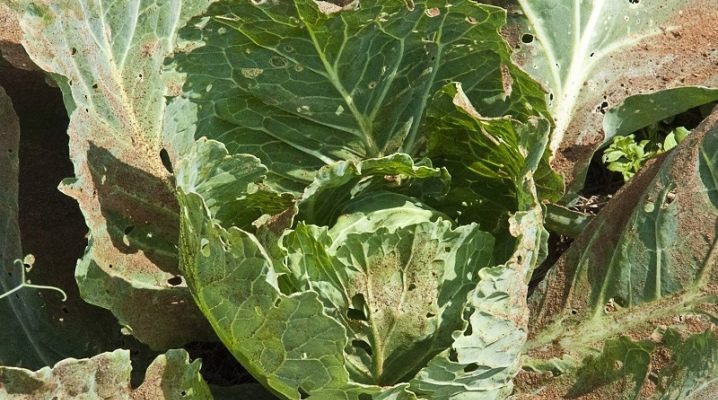
Diseases and pests of cabbage can easily destroy even the richest crop, if measures are not taken from the very beginning to solve the problems that have arisen. But even experienced gardeners do not always know how to spray seedlings for protection, than to process them in the open field after transplanting. An overview of the most popular pest and disease control tools and methods will help you figure it out.
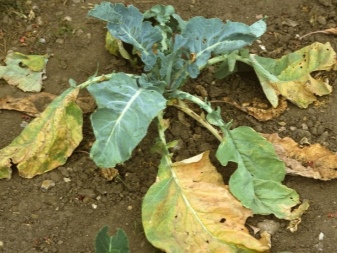

Diseases and their treatment
All the main diseases of cabbage can be divided into 2 main groups: fungal and viral. Their detailed description should be studied by both beginners and experienced gardeners. Some infections are especially dangerous for seedlings, while others only affect mature plants. With some ailments, the leaves turn yellow, with others, the roots are modified. Having learned more about different signs, you can choose the right treatment in time and choose the methods of struggle.
Let's list the main diseases of cabbage.
- Cabbage keel. One of the most common fungal diseases affecting cruciferous plants. The parasitic microorganism is especially dangerous for seedlings, affecting mainly young cabbage seedlings. The root infected with the keel becomes covered with growths that disrupt the nutrition of the plant. The fungus is dangerous for cauliflower and white cabbage, easily spread by wind, insects.
- Downy mildew (downy mildew). Fungal disease, equally dangerous for all plants of the cruciferous family. Infection usually manifests itself at the stage of seedling care in the form of grayish or yellow spots on the leaves. A white bloom appears on the back of the plate, the development of the plant stops or slows down noticeably. Downy mildew most often manifests itself in conditions of high humidity.
- Fusarium (tracheomycosis). This fungal disease affects not only cabbage, the infection can spread throughout the garden. The lesion is directed to the vascular system of the plant. The popular name - jaundice - received Fusarium for its characteristic symptomatology, in which the color of the leaf plate changes, it becomes fragile and brittle, traces of mushroom mycelium are visible on the cut of the petiole. The formation of a head of cabbage in case of damage occurs with violations, it turns out to be deformed.
- Blackleg. Under this general name, the defeat of several types of fungi is known at once. They persist in the soil in winter, and appear both on plants in the seedling stage and on adults. An infection can be recognized by the wateriness and then blackening of the stem in the root area. In adult bushes, the black leg does not cause death, but it can lead to a slowdown in growth and development.
- Mosaic... A viral disease affecting cauliflower. The disease manifests itself on seedlings at 1 month and older. The leaves are covered with necrotic spots and dark edging along the veins. With a turnip mosaic (black ring spot), the manifestations of the disease have a light green tint.
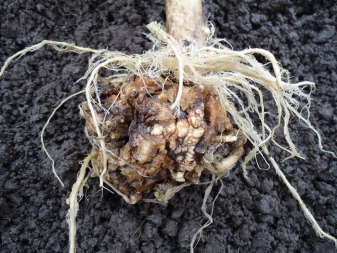
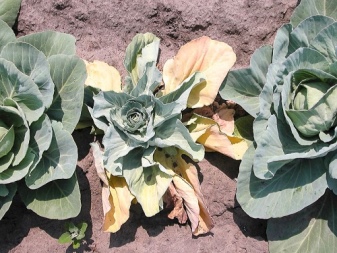
Measures of struggle are also chosen differently.... For example, in the case of a keel, only preventive measures can be taken. Preliminarily liming the soil in an amount of 0.25 kg / m2 will prevent the spread of fungus. For families other than cruciferous plants, the fungus causing the keel is not dangerous. You can safely sow roots or greens on the cultivated land.
In the case of other diseases, the treatment will be specific.
- With peronosporosis. Already affected plants should be sprayed with Fitosporin or Ridomil Gold preparations. As a preventive measure, cabbage seedlings can be treated with a Bordeaux mixture at a concentration of 1%. It is recommended to regulate soil moisture with mulch.
- With fusarium. Standard antifungal treatment is applied. Infected plants are removed from the beds, the rest of the plantings are sprayed with fungicides of the benzimidazole group. The next season, cabbage cannot be planted on the same beds.
- With a black leg. Diseased plants are destroyed. The beds are disinfected with a manganese solution. The remaining plants are treated with "Fitosporin" or Bordeaux liquid, baking soda solution, "Trichodermin" at a concentration of 100 ml per 1 bucket of water.
Cabbage viral diseases - mosaics of all kinds - do not respond to treatment. Plants are destroyed without waiting for death. As a preventive measure, aphids and ticks that carry the virus can be controlled.
And also special attention is paid to disinfection - seeds, soil, transplant tools.
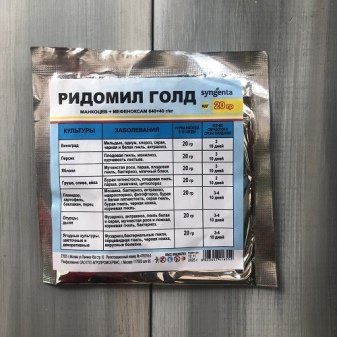
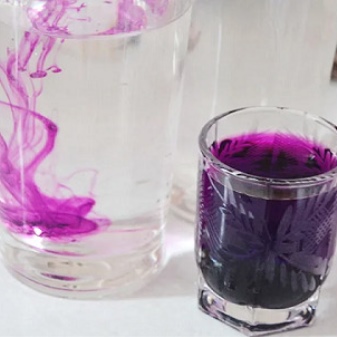
How can you treat pests?
Insect pests appear on cabbage, starting from the moment the plants are planted in the ground, as well as at other stages of the growing season. In the fight against them, an integrated approach is of great importance. Outdoor cultivation should begin even before planting, after the snow has melted. At this stage, it is necessary to water the soil with boiling water, destroying the larvae of the cabbage fly, winter scoop, and May beetles. Then, after transferring the seedlings, you will have to choose the right chemicals and insect repellents.
If you do not want to use industrial poisons, you can do without them. Some formulations can be simply sprinkled on the surface of the soil to repel pests. But do not assume that it will be easy to get rid of them without chemistry.
Sometimes spraying cabbage plantings has to be extended for the entire season. But it is much more effective to combine chemicals and folk recipes that provide comprehensive protection against pests.
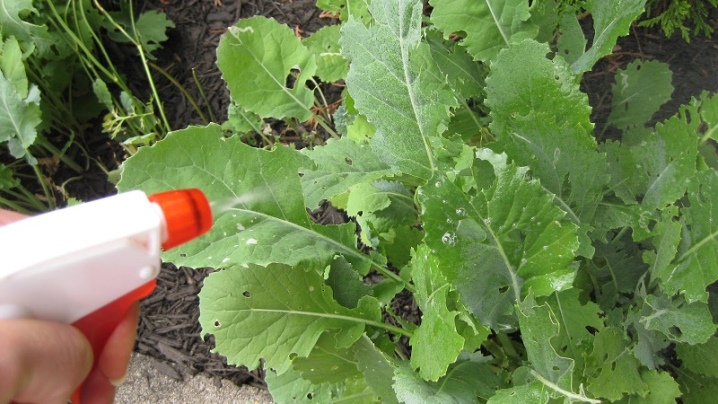
For cruciferous bugs
These pests are quite large, their bodies are painted bright green, with red spots on the elytra. The simplest solution seems to be the ability to spray the surface of the leaves with poison. But this is optional. Insects can not be poisoned, but collected by hand, then destroying the detected pests. Careful and proper cultivation of the land helps to reduce the risk of cruciferous bugs - insects mainly live on weeds.
Among the chemicals used in the fight against cruciferous bugs, the following means can be distinguished:
- "Fosbecid";
- Aktara;
- Actellik.
Among folk recipes, spraying plants with a solution of laundry soap is considered the most effective. Enough 300 g of shavings for 10 liters of water. The treatment is repeated weekly throughout the growing season.

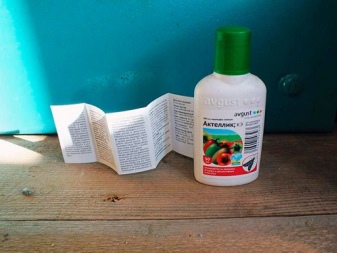
From aphids
Aphids are one of the most dangerous pests... It can be difficult to save cabbage from it. The pest sucks the juices from the plant, is able to destroy a whole head of cabbage in just 2-3 days. You can recognize the infection visually, by curling and changing the color of the leaves to pink. Aphids infect all types of cabbage, infect plants inside greenhouses and outdoors, and also carry almost all infectious and fungal diseases.
The destruction of pests with chemicals is not necessary in the case of aphids. Folk recipes will be no less effective in this case.
- Mustard powder solution. It will need 5 liters of hot water. Mustard is dissolved in water in an amount of 50 g, then the composition is cooled a little, used for spraying.
- A solution of laundry or tar soap. For 10 liters of water add 100 g of softened substance and 50 ml of ammonia. The solution can be sprayed on cabbage 1-2 times a month.
- Tobacco broth. It is prepared from 200 g of leaves and 5 liters of water. It takes about 90 minutes to cook the mixture.Then it is cooled, a little liquid soap is added, topped up to a volume of 5 liters. Spill the cabbage over the leaf with the solution.
With timely action, even a heavily infested plantation of plants will be cleared of aphids within a month. And also insects react negatively to vinegar solutions, ash and tobacco.
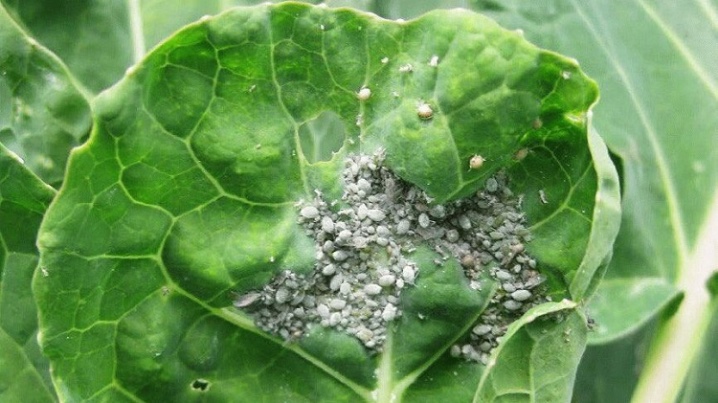
From flea beetles
To save cabbage plantings from these miniature, extremely active insects, pesticides help. Plants have to be sprayed in the spring and summer. Particular attention should be paid to seedlings. It is sometimes protected by folk methods and means - dusting with ash, crumbs of tobacco leaves.
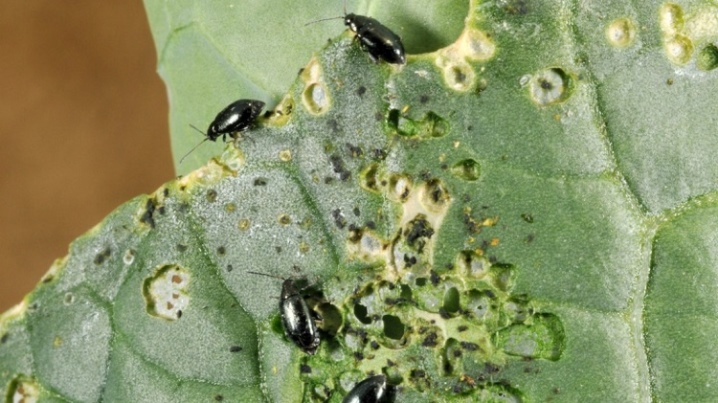
From the stem lurker
This pest affects cabbage and rapeseed crops. In fact, it is weevil beetle, 75 species of which cause significant damage to the plantings of agricultural plants. Cabbage is affected by its stem variety, which lays eggs and larvae in the petiole of the shoots. A sign of plant damage can be called the appearance of swelling on the back of the leaves. They rot, can lead to drying out and breaking off the stems.
The main fight against the stem lurking proboscis is carried out by agrotechnical methods. It is important to discard infected planting material, regularly loosen the soil, and observe the timing of crop rotation. Insecticidal treatment is carried out only in case of massive damage to plants.
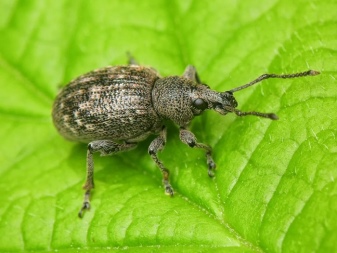

From moth
The cabbage moth is a pest that mainly affects cruciferous crops. An adult butterfly looks inconspicuous, has wings of a gray-brown or darker shade, the hind ones are fringed along the edges, with a silvery sheen. The fusiform moth larvae are first white and then green or brown. Cabbage moth appears on plants in late April or early May. It is possible to recognize the damage to the plant by the short strokes inside the cabbage leaves. Gradually, the holes become larger until only veins remain from the head of cabbage. The larvae can eat the stems and seeds, the apical buds of young cabbage.
Among chemical preparations against moths, the most popular are:
- complex "Inta-Vir";
- pyrethroid Sumi-alpha;
- "Fury" at a concentration of 1 ml per 10 liters of water.
Biological agents effective against moths are limited to the formulations "Bitoxibacillin", "Lepidocide". Herbal decoctions for controlling caterpillars on young plants can be prepared on the basis of valerian, dandelion leaves, mustard powder, tansy. The consumption of raw material per 10 liters will be from 500 to 1000 g.

From caterpillars and larvae
Fighting those who eat leaves on cabbage has to be done on an ongoing basis. The greatest danger is posed by whites and scoops. Caterpillars and larvae of butterflies gnaw the leaves of cabbage, litter them with their excrement. In case of damage to cabbage beds by caterpillars, the most reasonable solution would be to use special pesticides.
There are several available folk recipes for dealing with caterpillars and larvae.
- Spraying with aqueous solutions. Salt, 50 ml of ammonia or 1 glass of vinegar at a concentration of 9% are added to the liquid. This will be enough to prepare a solution of 10 liters of water.
- Planting wormwood next to the beds... Its scent scares away butterflies.
- Cooking pepper broth. 500 g of dried pods of a spicy variety of this vegetable are soaked in boiling water. Infusion is poured into 10 liters of hot water. After 1 hour, it is ready for use.
Folk recipes are mainly designed to scare away insects from cabbage plantings. You should not seriously rely on them in the fight against caterpillars.

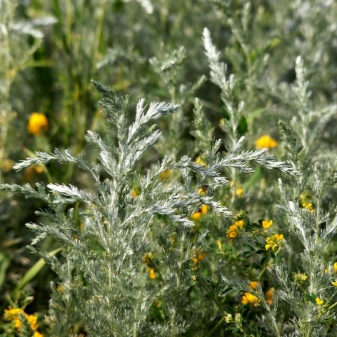
From gall midge
This cabbage pest actively infects representatives of different species of the cruciferous family. The adults are colored brown-orange, have long antennae and legs, and do not exceed 1.5 mm in size. Pests are sensitive to pesticides. When processing, it is better to use compounds from the neonicotinoid group.
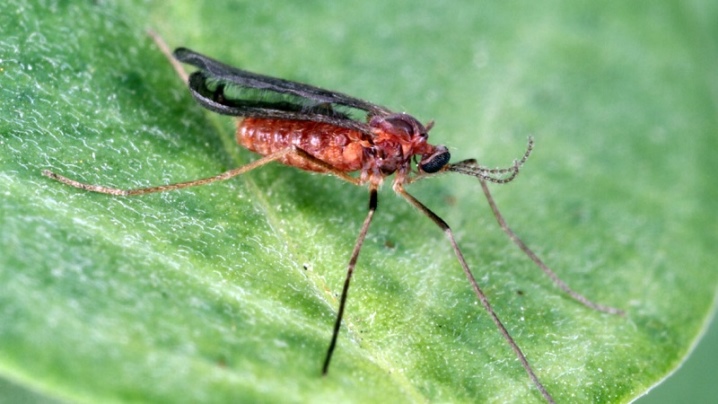
From thrips
Miniature pests thrips are not visible on the surface of plants due to their small size. Traces of damage are always located locally, in the form of whitish spots, gradually turning into tissue necrosis. The leaves gradually darken, die off. Traces of damage can be found on white cabbage, Peking cabbage and Brussels sprouts. Against thrips, biological agents such as Fitoverm, as well as infusions of plants such as celandine, garlic, hot pepper, etc.
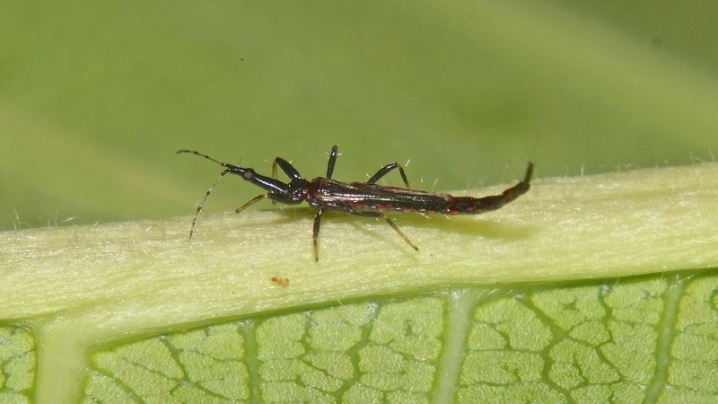
From slugs
These pests do not annoy gardeners too much, but can spoil the cabbage heads during the ripening process. They appear more often in greenhouses, in conditions of high air humidity. Slugs do not tolerate bright sunlight, high temperatures.
The main danger of slugs is as carriers of various fungal infections. They do not use chemicals against them, but can set traps or collect pests by hand.
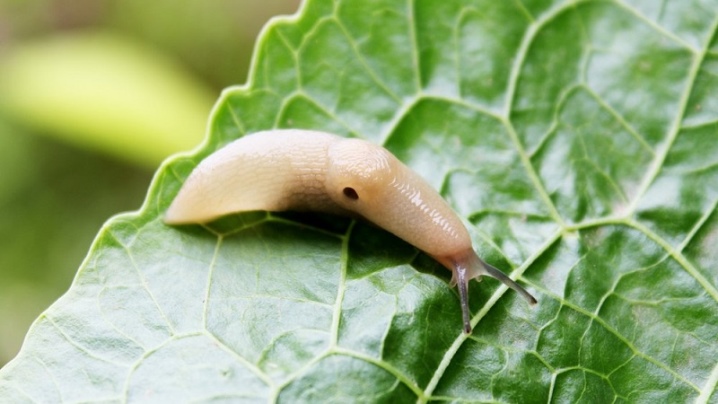
Prevention measures
There is a list of fairly simple preventive measures to help protect cabbage from possible disease and pest damage. It is especially important to protect young plants after planting in the garden, because they are most vulnerable to disease. Early varieties of cabbage that sprout in cold weather require more careful maintenance. Protection lies not only in chemical treatment - diluting Fitoverm to fight fungal infections will not be enough. It is important to heed the recommendations of experts.
- Compliance with crop rotation... Cabbage should not be planted in the same place for several years in a row. Moreover, representatives of the cruciferous family, in general, should not be located on the same ridges. Good precursors for cabbage are onions and garlic, herbs, legumes, green manures, cucumbers, and squash.
- Selection of early varieties. This will help avoid some late-onset cabbage diseases.
- Resistance to specific infections... For example, there are varieties that are not affected by the keel.
- Disinfection of seeds. They are soaked in a manganese solution, immersed in water for 20 minutes at a temperature of + 48 ... 50 degrees, then cooled in a cold liquid. After that, the material is sent for landing.
- Frostbite protection... After exposure to low temperatures, the immune defense of the plant decreases, it becomes more vulnerable to damage by viral infections.
- Neat care. It is important to avoid possible damage to parts of the plant.
- Careful selection of planting material... You should not take it from random sources, from neighbors and acquaintances. Infected seeds can start an epidemic in the garden.
- Loosening and weeding regularly. It is useful to form a small mound at the base for additional root protection.
- Liming the soil 1 year before planting cabbage. This will avoid hitting landings with the keel.
- Watering regulation. It is especially important in the heat. Frequent watering will help prevent flea beetles from growing on your plants.
By observing preventive measures, you can significantly reduce the risks of damage to cabbage by insect pests or the most common diseases.
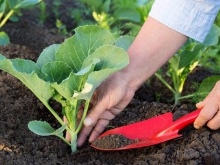

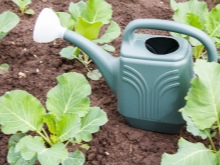













The comment was sent successfully.